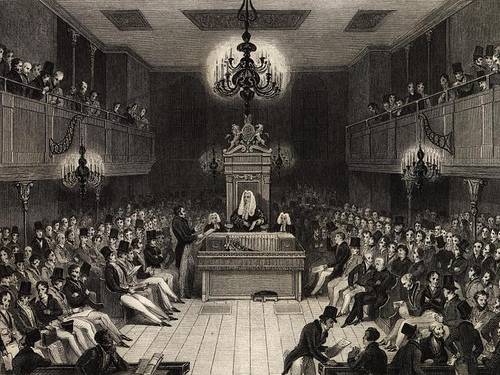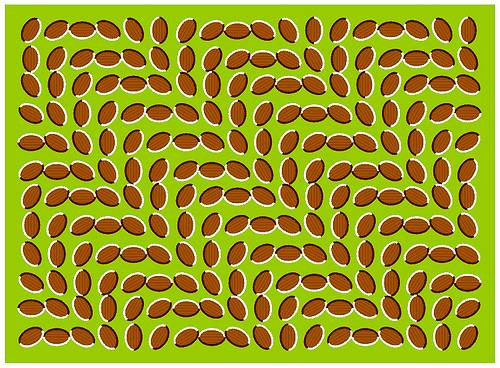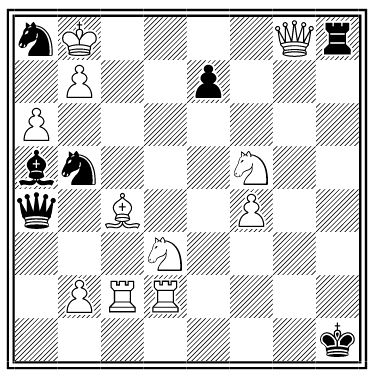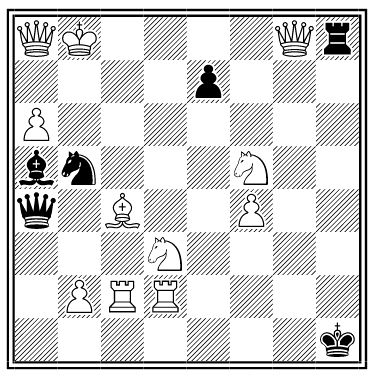“Life is a horizontal fall.” — Jean Cocteau
Over and Out

Technically, it’s illegal to resign from the British House of Commons. Since 1623 the rules have stated that a member of Parliament cannot renounce the trust of his constituents.
So members use a loophole: An MP who accepts an office of profit under the Crown must leave his post to avoid a conflict of interest. So today when an MP wishes to resign, the chancellor of the exchequer appoints him crown steward of the Chiltern Hundreds or of the Manor of Northstead, and he can legally resign.
But even this workaround gets awkward. Because there are only two available offices, sometimes MPs must wait in line. When 15 Ulster unionists resigned en masse on Dec. 17, 1985, they had to be appointed one after another in quick succession through the day. What will future historians make of this?
The Corpse Groom
Rippling Beans

An optical illusion. Nothing’s moving.
The Paradox of Omnipresence and Timelessness
It’s an essential attribute of God that he’s omnipresent, and Thomas Aquinas held that he also stands somehow outside of time and is not bound by temporal considerations. But, Richard La Croix argues,
if God is indeed omnipresent then it would appear that he must have been in the United Nations building yesterday as well as the day before yesterday. And if God was in the United Nations building both yesterday and the day before, then it would appear that he is in time and that temporal predicates do apply to him. So, it would appear that God is not a timeless being if he is omnipresent and that two doctrines crucial to the theology of Thomas Aquinas are logically incompatible.
Omniscience poses further problems: If God knows all things, then he knows what both man and he himself will do. So how is free will possible?
In a Word
barbatulous
adj. having a small beard
debarb
v. to deprive of a beard
imberb
adj. without a beard
“A Poor Man’s Disneyland”

Jim Bishop’s castle is exactly that — a 160-foot baroque edifice that Bishop has constructed single-handed over the course of 40 years in the forest of southern Colorado.
It already contains a thousand tons of stone and iron, and still Bishop’s not finished. Before he dies he wants to add a moat, a roller coaster, a balcony big enough to accommodate an orchestra — and a second castle for his wife.
Close Call
On Sept. 26, 1983, Lt. Col. Stanislav Petrov of the Soviet Air Defense Forces received a warning that the U.S. had launched an ICBM toward the Soviet Union. He dismissed it as a false alarm. Later four additional missiles were detected, and again Petrov decided they were phantoms.
He was right, but he couldn’t have been certain, and if he’d followed protocol he might have started a full-scale nuclear exchange between the superpowers. Bruce Blair of the World Security Institute said, “I think that this is the closest we’ve come to accidental nuclear war.”
Mima Mounds

What are these? They appear by the hundreds throughout western North America, but no one knows what produces them. Earthquakes? Glaciers? People? Gophers? The force involved must be considerable — the mounds can reach 8 feet in height and 50 feet in diameter — but for now their origin is a mystery.
01/15/2014 UPDATE: Gophers. (Thanks, Hugh.)


